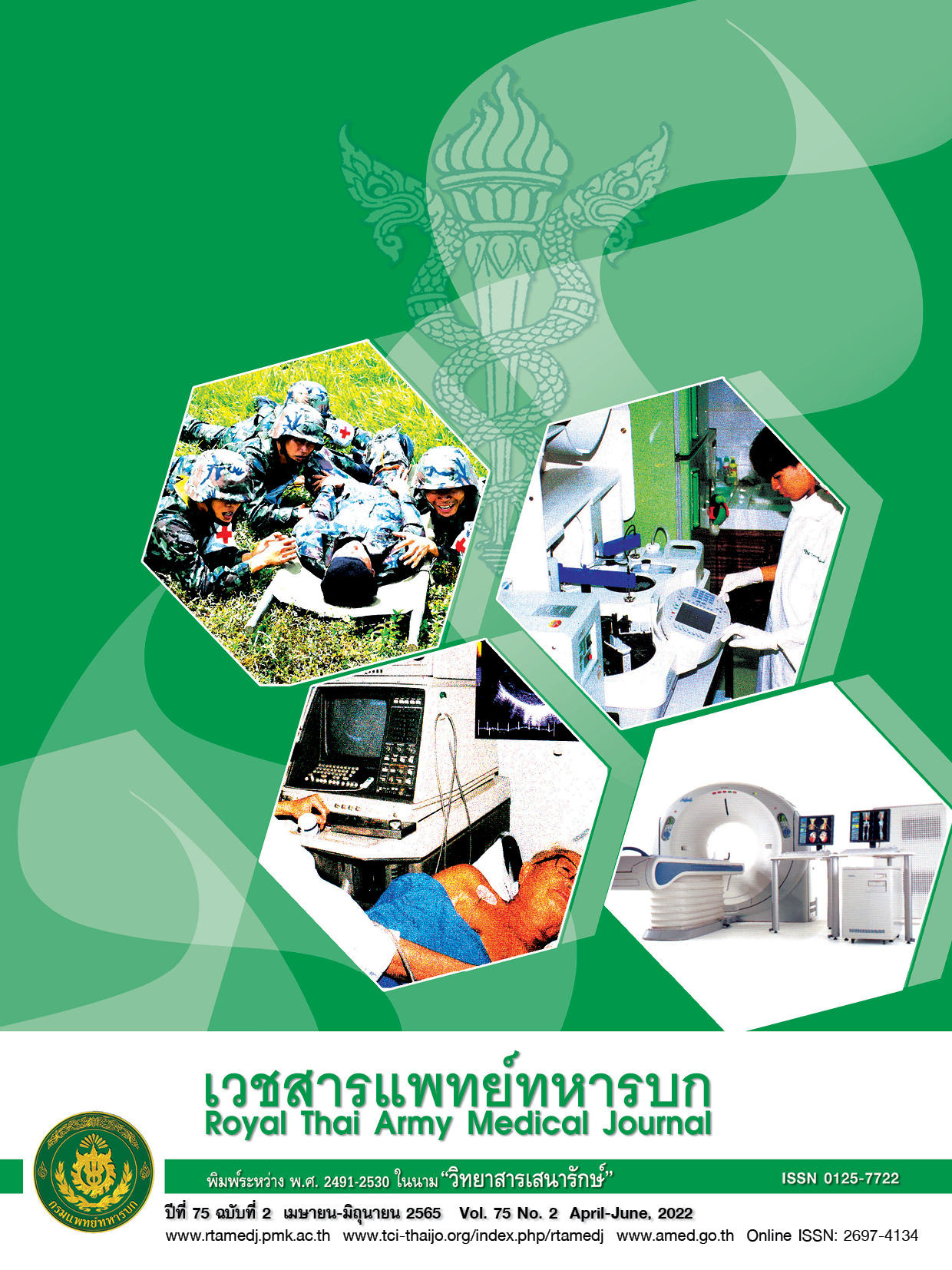Correlation between hand-behind-back (HBB) test and hand-behind-neck (HBN) test with shoulder capsule and pectoral muscle length
Main Article Content
Abstract
Background and objectives: This study therefore aimed to study the relationships between the functional tests; HBB test and HBN test with shoulder joint capsule tightness and pectoral muscle length.
Methods: Five hundred sixty-six records of new patients with shoulder problems according to medical records of Physical Therapy Center, Faculty of Physical Therapy, Mahidol university including shoulder joint capsule tightness, pectoral muscle length, HBB test and HBN test. Non-parametric correlational studies have been investigated by using Spearman’s correlation coefficient.
Results: HBB test significantly correlated with shoulder anterior capsule tightness, while HBN test significantly correlated with shoulder superior capsule tightness (P < 0.001). Moreover, HBB test and HBN test also significantly correlated with pectoralis major muscle length (P < 0.001).
Conclusions: Joint capsule tightness assessment is significant because of its relationship with functional mobility. The holistic assessments therefore influence the effective intervention plans.
Downloads
Article Details

This work is licensed under a Creative Commons Attribution-NonCommercial-NoDerivatives 4.0 International License.
Articles in this journal are copyrighted by the Royal Thai Army Medical Department and published under the Creative Commons Attribution-NonCommercial-NoDerivatives 4.0 International (CC BY-NC-ND 4.0) license.
may be read and used for academic purposes, such as teaching, research, or citation, with proper credit given to the author and the journal.
Use or modification of the articles is prohibited without permission.
Statements expressed in the articles are solely the opinions of the authors.
Authors are fully responsible for the content and accuracy of their articles.
Any other republication of the articles requires permission from the journal.
References
2.Satpute K, Bhandari P, Hall T. Efficacy of Hand Behind Back Mobilization With Movement for Acute Shoulder Pain and Movement Impairment: A Randomized Controlled Trial. J Manipulative Physiol Ther. 2015;38(5):324-34.
3.Satpute K, Hall T, Kumar S, Deodhar A. A new method of measuring shoulder hand behind back movement: Reliability, values in symptomatic and asymptomatic people, effect of hand dominance, and side-to-side variability. Physiother Theory Pract. 2016;32(7):520-7.
4.Sharma R. Epidemiology of musculoskeletal conditions in India. New Delhi, India: Indian Council of Medical Research; 2012.
5.Alipour A, Ghaffari M, Shariati B, Jensen I, Vingard E. Occupational neck and shoulder pain among automobile manufacturing workers in Iran. Am J Ind Med. 2008;51(5):372-9.
6.Morais N, Cruz J. The pectoralis minor muscle and shoulder movement-related impairments and pain: Rationale, assessment and management. Phys Ther Sport. 2016;17:1-13.
7.Duzgun I, Turgut E, Çinar-Medeni Ö, Kafa N, Tuna Z, Elbasan B, et al. The presence and influence of posterior capsule tightness on different shoulder problems. J Back Musculoskelet Rehabil. 2017;30(2):187-93.
8.Junsiri P, Suwannarat S. Comparison of shoulder range of motion in all directions between individuals with shoulder adhesive capsulitis and with other pathologic shoulder pain. J Health Sci. 2020;29(2):252-9.
9.Satpute KH, Hall T, Adanani A. Validity of an Alternate Hand Behind Back Shoulder Range of Motion Measurement in Patients With Shoulder Pain and Movement Dysfunction. J Manipulative Physiol Ther. 2018;41(3):242-51.
10.Kendall F, McCreary E, Provance P, Rodgers M, Romani W. Muscles testing and function with posture and pain. 5th, editor. Baltimore, Md: Lippincott Williams & Wilkins; 2005.
11.Kisner C, Colby LA, Borstad J. Therapeutic exercise: foundations and techniques: F.A. Davis Company; 2017.
12.van den Dolder PA, Ferreira PH, Refshauge K. Intra- and inter-rater reliability of a modified measure of hand behind back range of motion. Man Ther. 2014;19(1):72-6.
13.Yang JL, Lin JJ. Reliability of function-related tests in patients with shoulder pathologies. J Orthop Sports Phys Ther. 2006;36(8):572-6.
14.Pascoal AG, Morais N. Kinematic comparison and description of the 3-dimensional shoulder kinematics of 2 shoulder rotation tests. J Manipulative Physiol Ther. 2015;38(4):288-94.
15.Sraj SA. Internal rotation behind-the-back angle: A reliable angular measurement for shoulder internal rotation behind the back. Sports Health. 2015;7(4):299-302.
16.Gulick D. Shoulder ortho notes: clinical examination pocket guide. 2nd ed. Philadelphia, PA: F.A. Davis Company; 2009.
17.Hall K, Borstad JD. Posterior shoulder tightness: To treat or not to treat? J Orthop Sports Phys Ther. 2018;48(3):133-6.
18.Clemente CD. Anatomy : a regional atlas of the human body. Philadelphia [etc.]: Wolters Kluwer/Lippincott Williams & Wilkins; 2011.


